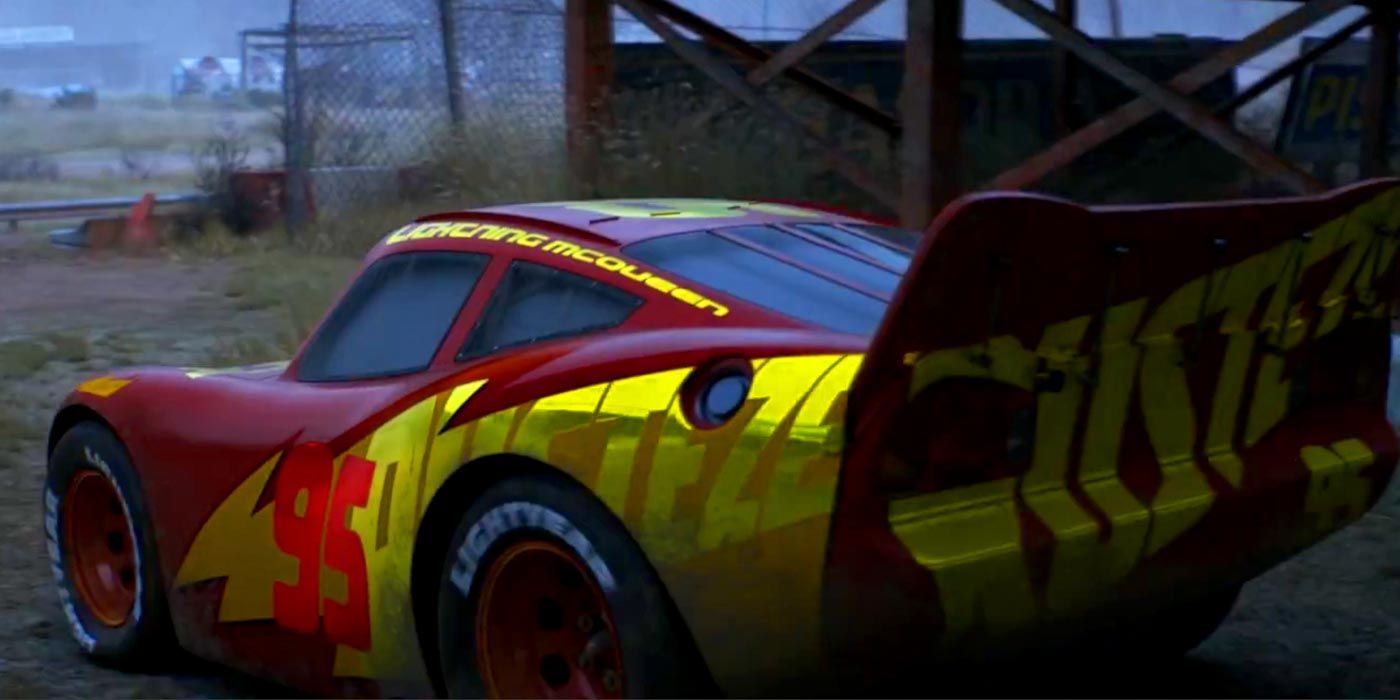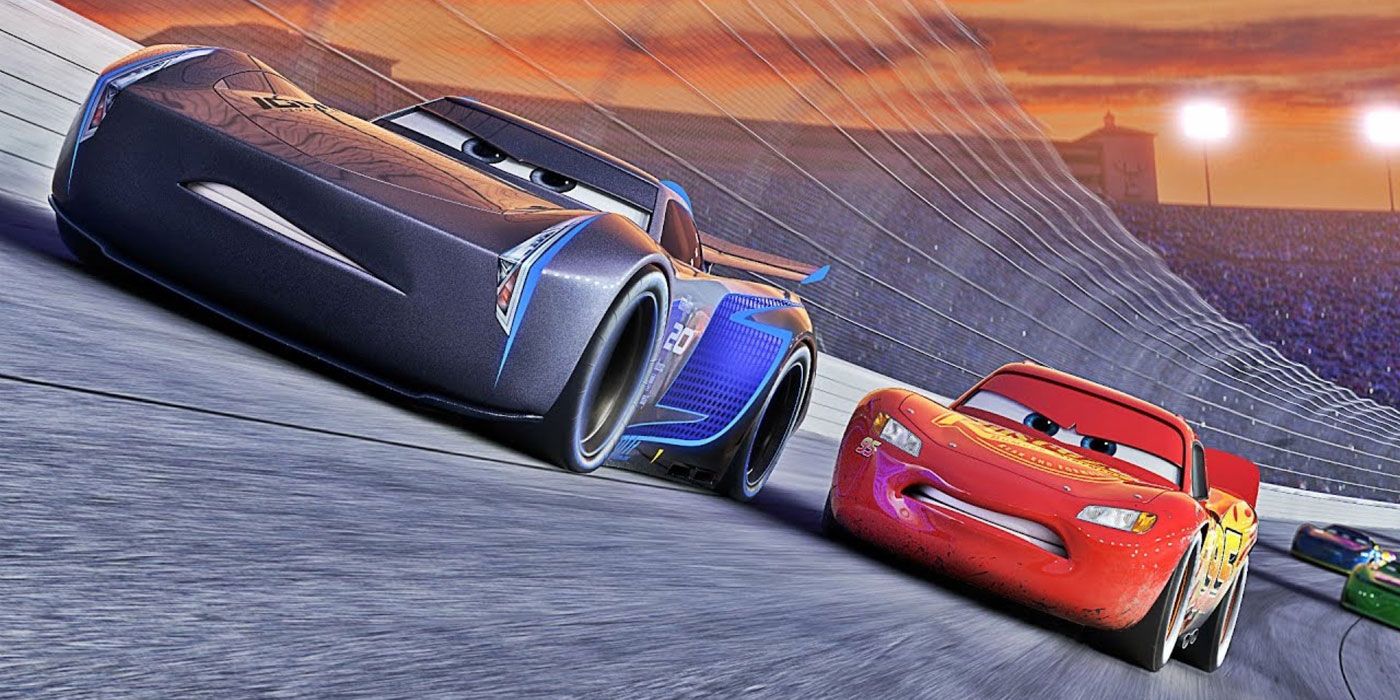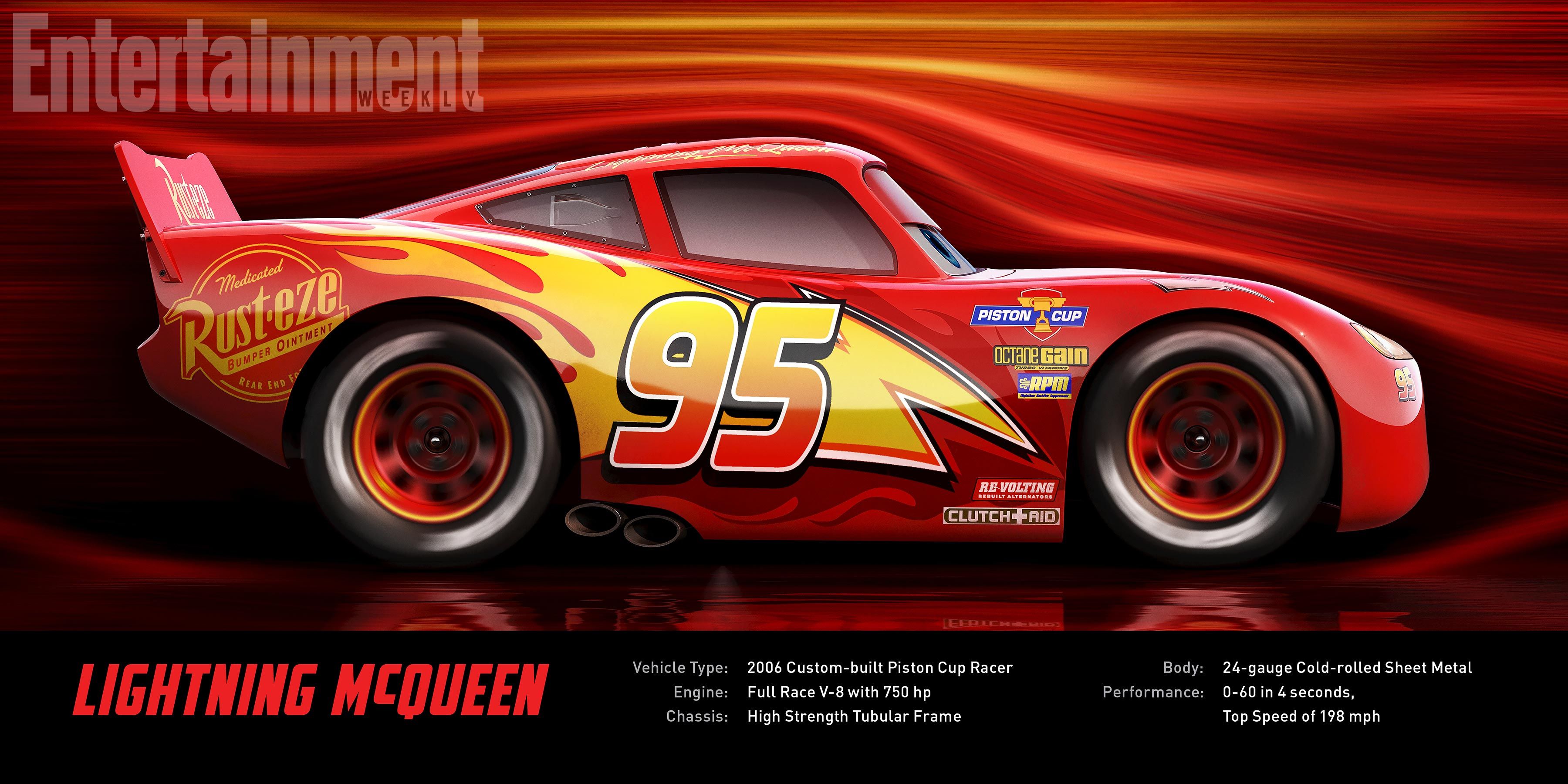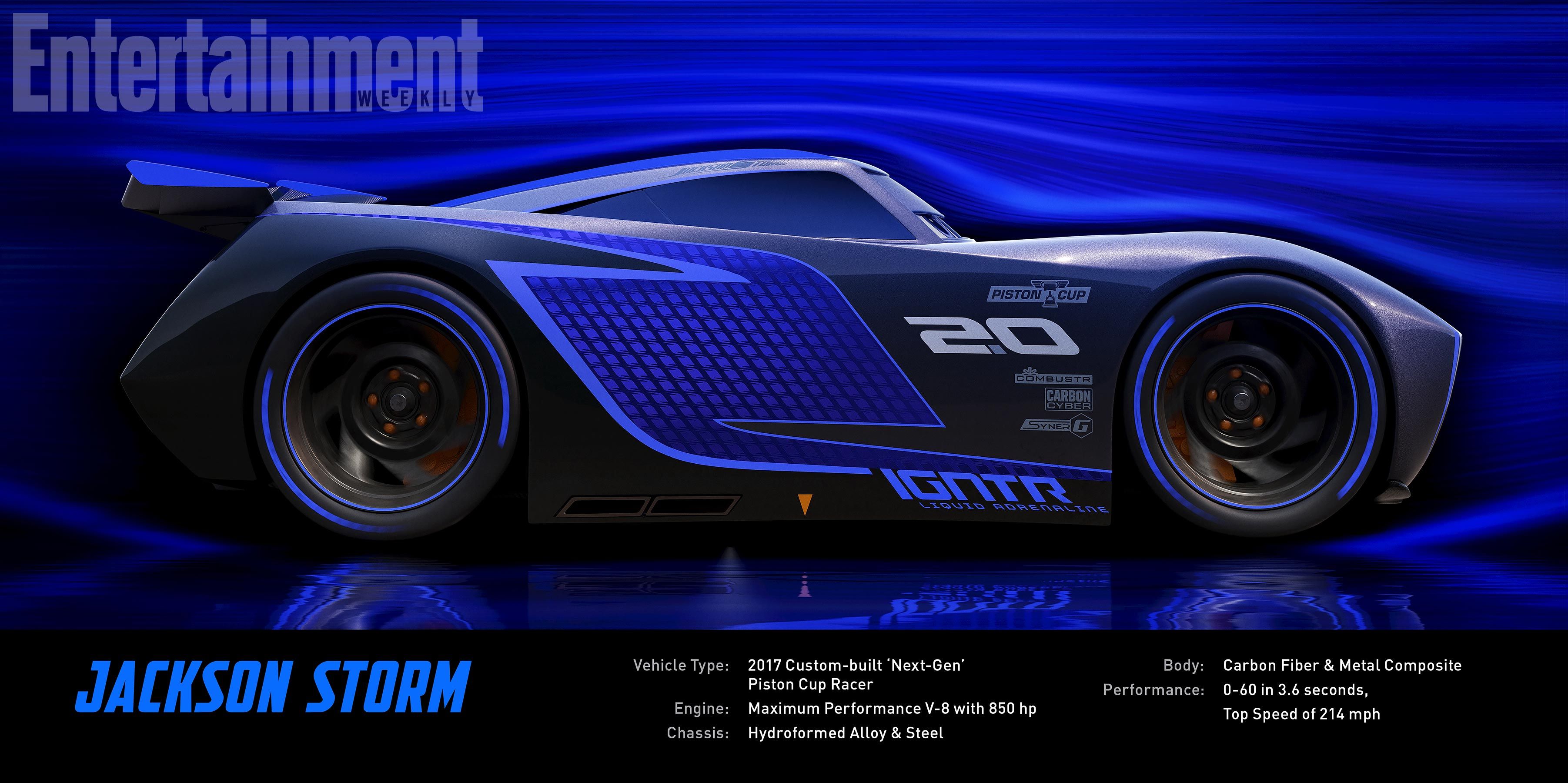As longtime members of the renowned Pixar creative team, director Brian Fee and producer Kevin Rehner aren’t exactly rookies when it comes to the Cars franchise, but for their first time in the driver’s seat for Cars 3 they wanted to put the pedal to the metal and race into new story and character territory while still keeping one eye in the rearview mirror.
A longtime storyboard artist who began his career at Pixar as a story assistant working on the original Cars film, Fee was a canny choice to take the wheel from Disney Animation head John Lasseter, who was the driving creative force behind the first two films, for his directorial debut. Meanwhile, Rehner has served as a casting director for every project at the company since “Finding Nemo” and been a producer A Bug’s Life, several Pixar shorts and the Cars-derived TV shorts Tales from Radiator Springs.
RELATED: Cars 3 Review: A Colorful and Adorable Meditation on Aging
Fee and Rehner joined Moviefone for a freewheeling peek behind the creative process that went into Cars 3, including crafting a poignant new journey for Lightning McQueen, discovering an innovative way to revisit Paul Newman’s Doc Hudson and rolling out some new-model characters with an eye toward inclusion.
CBR: The Cars franchise is classic already, just ten years in. As you started to formulate what kind of story you wanted to tell, tell me about looking at the other two films, and discovering what inspired you there – but then also putting the fresh spin you wanted to put on it.
Brian Fee: It’s a good question. So one of the things that has always interested me in moving into this third movie was the relationship that McQueen would have had with Doc Hudson. You had these two older and younger generations that were just clashing all throughout the first movie, right? By the end of the movie, they were mentors to each other. In my mind, I actually like to think it went a little further.
What we tried to do in Cars 3 was to give you a little taste of life after that. I see them as father and son. If they were humans, I like to think that McQueen and Doc would have went fishing, that kind of stuff. But now Doc’s not there, and McQueen, now that he’s older, he’s going to evolve.
He’s going to be going through things in your life. I’m going through things in my life. Life, when I’m 40, is much different than life when I was 20. When you’re 20, and you come out of college, and you’re into whatever, and you’re 40, and you realize, “I’m not as young as I used to be.” Everything’s different now. My priorities are different. I’ve got kids. I would like to call my parents and ask for advice, but my mother has passed on. Life changes, and it has to evolve.
So early on, we were immediately interested in this relationship that McQueen would have had with Doc, that he no longer can have. Or can he? Because I also like to think he can keep learning. Even after people have passed on, the more you learn about them, you can still keep learning. Little stories and stuff can help you when you need it.
Kevin Reher: We started with the sports comeback story, and the aging of an athlete, and it evolved into something I think better and deeper, that I think people are going to care about. They can always watch Secretariat on DVD, or any sports comeback story.
How lucky that you had a wealth of Paul Newman reference audio on hand.
Fee: Fantastically lucky. Even in the very early processes, when the movie is just a baby version of what it might be, there’s a lot of evolutions going to happen, a lot of story changes, we still had this idea of this relationship with McQueen and Doc, and we had flashbacks with the Doc character.
RELATED: Cars 3 Introduces New-Look Lightning McQueen & All-New Characters
At the time, we would just like, “Well, let’s just write whatever we want.” We have [inaudible 2:52] It was never soulful, never felt right at all. We reached a point where we were like “Really, this is really what the movie is going to be about. It needs to be Paul Newman.”
Reher: The Newman’s Own Foundation was very generous, because we told them, “By the by, we’ve got all these tapes of recordings he did talking about racing, talking about his passion, and we would love to use that, and if you’re okay with it.”
And they were very, very accommodating, and said, “Sure. What do you want to do? How is it teed up? How are you respecting it?” I’m looking forward to next week writing to Jacqueline, who’s their attorney, who was our person we went to to say, “How did we do?” I think they’ll be pleased.
Fee: We had some wonderful lines that we didn’t use, because they didn’t match the story we were trying to tell. So that’s the thing. We want to use all these lines. There are all these hours of dialogue that’s recorded, but we could only use what helps us tell the story. It worked out. It could have easily not have worked out. We would have been very sad.
Reher: We also went back to – it turns out that the “Car Talk” producer is actually at Berkeley, and five minutes away from our office. So we went to him and asked him about going back to the old Car Talk, Click and Clack recordings--
Fee: From the radio show.
[NOTE: radio hosts Ray and Tom Magliozzi, that latter of whom passed away in 2104 and who played Dusty and Rusty Rust-eze in the first two Cars films, with Ray returning for Cars 3]
Reher: --From the radio show, and pull some lines. We had their editor go and spelunk around. “We’re looking to try to do this, is there something funny?” I think that one line [in the film], “Don’t drive like my brother” – that came actually from Car Talk!
We do get a good taste of the Radiator Springs residents, the original group, and you guys used Mater very strategically and always kind of right at the right moments.
Reher: Thank you for noticing that.
Then you get to open it up to some new characters. Was that a big debate? How much of our beloved cast do we stick with, and how many new cars do we introduce?
Fee: It was always driven by what the story needed, right? If you think of McQueen on this journey as a bit of a, “go out in the desert and find yourself,” right? You can’t really tell that story if you have too big of a support group with you. You kind of have to be, essentially, on your own in order to tell that story. So that’s why the whole gang doesn’t come, that’s why Mater doesn’t come with him on the journey. That would be too big of a support group, to put him in the situations we needed to put him in.
RELATED: Cars Franchise Creative Head Theorizes the Cars Killed Off Humans
So it’s driven by the story, and absolutely, I personally love that scene with Mater. It’s my favorite version of Mater. The best friend, wise in ways he doesn’t even realize. That scene came in pretty early. It was one of the first scenes in the production, because it just felt so right, when that scene kind of locked together.
As much as the people who love these movies love the characters, they love the Cars world. You get to blow it out a little bit, and explore some new corners, as John did in the second movie. So many fun things to do – it seems infinite, the possibilities that you can have fun with in the world. So tell me about diving in, grabbing everything you could, but also knowing, “Okay, we can’t do everything.”
Fee: You can’t do everything.
Reher: Originally, given LA car culture – because there was no more car culture that is deeper or more fabulous than the LA car culture – one of the beginning versions, there were some scenes in LA, in Beverly Hills, with Lamborghinis, and I was like, oh, how are we going to get clearance for all these things? That was one things that we like, yep, doesn’t serve the story, so he’s not going to LA.
Fee: You’re right. We can’t do everything. For instance, the demolition derby scene. There was always a demolition derby in the earliest versions of the film. It wasn’t earning its peak storyline, because the story wasn’t quite locking yet. We’re still unearthing it. It’s like there’s a statue inside that marble, and we just very slowly can find it and reveal it.
So normally, when something is not serving the story, like the demolition derby, it gets kicked out. But that was one that we held on to. It will eventually serve the story. It will. Until then, we have to hang on to it, because it’s just too much fun. But we would have cut it if in the end it wasn’t. Once the story started to find itself, we were able to use it to take advantage of that to serve the story. That’s when everything kind of starts to lock, and I’m so thankful we held on to that set. We just loved it too much.
There’s such a great streak of diversity in the movie, without underlining it and circling it in red. I thought that was such a great way to go about it. Can you talk about the philosophy?
Fee: Yeah, we did have a philosophy. We wanted this to be very diverse. We looked at it a lot, as we didn’t want to call out that diversity. We look around Pixar where we work. People happen to be Indian. They just happen to be. That’s not who they are, they happen to be Indian. They happen to be African-American. They happen to be women. They happen to be whatever. So that’s kind of the way we approach this movie.
There was a moment at the end, we won’t spoil it too much, but I did notice there was a series of reaction shots from all the female “Cars” characters. What a great way to do it. Can you talk about the inspiration that got you to that?
Fee: Yeah, there’s so much inspiration, between Kiel, the writer that spent a lot of time on Cruz, and Bob Peterson too, from our daughters. Our daughters have influenced this film. We want a film for our daughters... A female that’s watching another female break through is going to notice it.
That’s been going on. We have Wonder Woman, the Star Wars movies have successfully put women at the center. Are you hoping that this is that same kind of thing in what’s been the seemingly, previously boy’s world of Cars?
Fee: I hope so. Honestly, that was never our intention when we started. We were just trying to tell a story that we’re inspired by. We’ve been at it for six years. Yeah, anything that helps inspire people is great. I want my kids to say “I can do anything” after watching this film.





